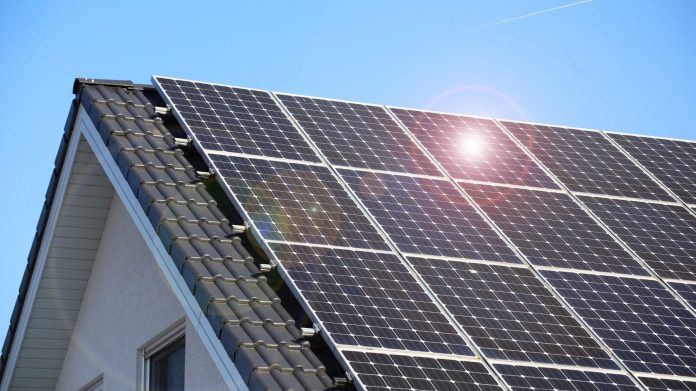From February 1st there will be less money for electricity fed in from photovoltaic systems. The date of commissioning is crucial for operators.
Anyone who has a photovoltaic system on the roof but cannot use all the electricity themselves can feed it into the grid – and receive money for it. However, from February 1st, the current feed-in tariffs for photovoltaic systems will decrease – as provided for by the Renewable Energy Act.
It may therefore make sense to bring the photovoltaic system online by January 31st in order to still benefit from the higher feed-in tariffs. For systems that are only put into operation after this deadline, the remuneration is around one percent lower, says Martin Brandis, energy expert at the Federal Association of Consumer Organizations. A further reduction of around one percent will then take place from August 1st.
This remuneration is currently available for electricity fed in
Embed
Everyone has to decide for themselves whether it is worth pushing the envelope on photovoltaics due to the gradual reduction – the effects are manageable.
For example, anyone who gets a system with a peak output of 10 kW on their roof and uses 1,500 kWh of the approximately 10,000 kWh of electricity that the system produces per year will currently receive around 689.70 euros for the surplus fed in. From February 1st it would be around 682.50 euros – only around 7.20 euros less per year. For full feeders the difference would be around 13.30 euros per year.
The difference increases as the system size increases. For a system with 30 kW peak output and 80 percent feed-in, the difference in remuneration between the reference dates amounts to around 17.80 euros per year. With full feed-in it is around 33.60 euros. For example, if you can use more of the electricity you produce in your own home with the help of battery storage, the difference will be less significant.
Danger
The consumer advice center warns against a common misconception: in some cases a compensation level of 13.4/13.3 or 8.6/8.5 cents per kilowatt hour of electricity fed in is mentioned. According to consumer advocates, this information is “values to be invested”. These are only paid out if the operator sells the energy produced directly to a direct marketer. However, this is not the case with small PV systems such as those found in most private households. They usually don't sell their electricity to a direct marketer because it wouldn't be profitable.
In addition, those affected should also know that the exact values of the feed-in tariff are not set by law. Instead, they are calculated based on various forms and regulations listed in the EEG 2023.
Remuneration: The date of commissioning is decisive
According to Martin Brandis, the date of commissioning of the system is decisive for the applicable compensation rate. That is the day on which the system generates electricity for the first time. Consumers can then count on the respective remuneration rate for 20 years. According to Brandis, the entitlement to the feed-in tariff only ends 20 years after the end of the year of commissioning. So if you install the system early in the year, you can expect fixed income for almost 21 years.
And what if the time is up and photovoltaic system operators are no longer entitled to compensation? Then a transitional regulation now applies. “Plant operators can then continue to feed in electricity, but receive less money for it,” says Brandis. The reduced feed-in tariff is based on the market price for electricity fed in. However, it is only valid until 2027 and then expires.
Remember the registration deadlines
Important for system operators: do not miss the deadlines for registering the system. According to energy expert Brandis, the network operator must be notified of the plan in advance. And the system must be registered in the Federal Network Agency's market master data register no later than two months after commissioning. Failure to do so can cost consumers compensation.
By the way: Owners of a single-family home they use themselves do not have to pay tax on the remuneration if the system does not exceed the peak output of 30 kW. In the case of multi-family homes, the output of the system must not exceed 15 kW peak per residential unit in order to benefit from the tax exemption.


